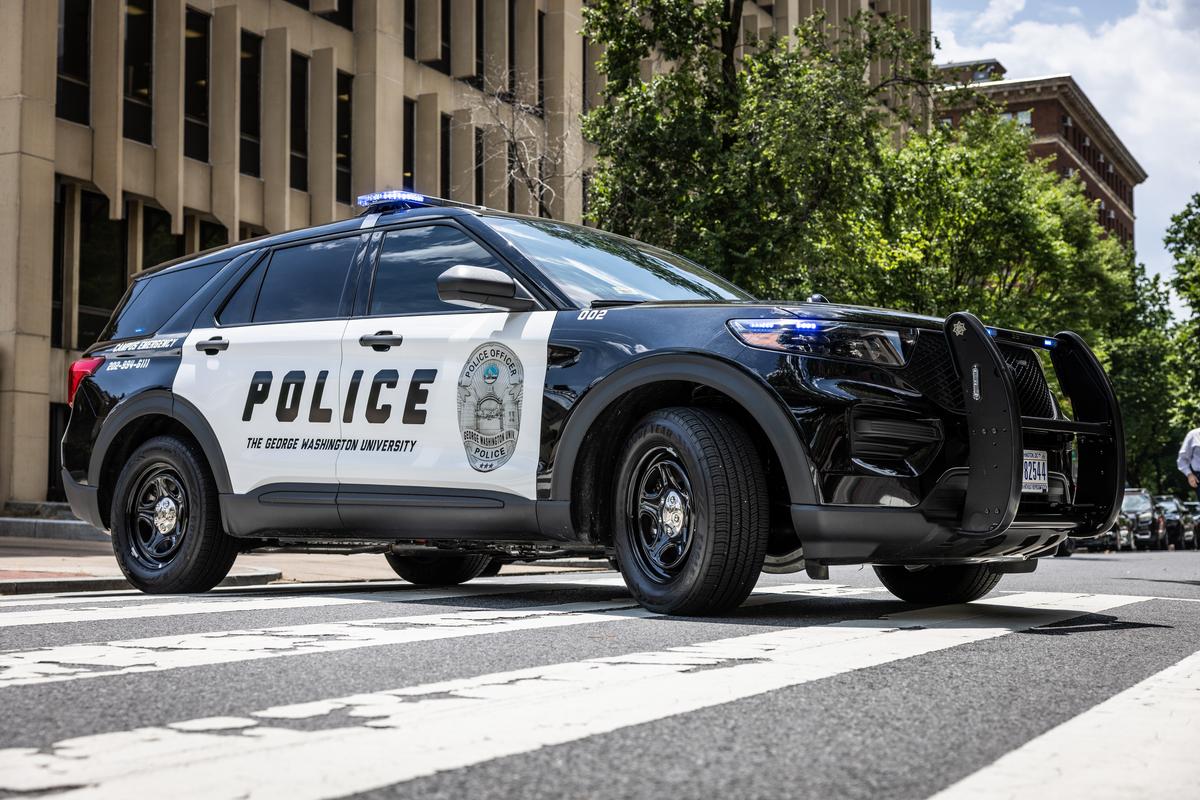After completing the first phase of arming George Washington Police Department supervisory officers, the university, in implementing its multi-phase plan, continues to garner community engagement and feedback in advance of the next phase.
Since announcing its implementation plan on Aug. 21, the university has now armed executive supervisory officers Chief James D. Tate and Capt. Gabe Mullinax. Prior to arming, the university ensured Tate and Mullinax met training and other requirements; established the interim Independent Review Committee; created secure storage space; and met with various groups of students, faculty and staff.
Designing this first phase with the limit of two officers has allowed the university to be prepared for a life-threatening emergency on campus while continuing to hear from the community, incorporating input and ensuring successful future phases.
“GWPD is committed to protecting the safety of our community,” Tate said. “I want us to continue to have an open dialogue and work in partnership with our students, faculty and staff. I am looking forward to more events and meetings where I can interact with the community and hear your perspectives about our implementation process and safety broadly on our campuses.”
Previous engagement with community
In April, the university announced that it would begin planning to arm GWPD supervisors as part of a comprehensive public safety plan. The decision was driven in part by rising gun violence nationally and the need for GWPD supervisory officers to be equipped to respond to serious emergencies. GW's densely populated setting and the importance of timely response to emergencies also contributed to the decision, which enables officers most familiar with GW's campuses, community and culture to be directly involved in emergency response.
Since the spring, the university has sought community input on planning and met with student groups, faculty, staff, neighbors and other stakeholders while reviewing comments submitted through a feedback portal.
Robust engagement has been underway again this fall as leadership met with more members of the community and shared updates on implementation planning, soliciting additional feedback that was incorporated into a five-part plan that is guiding the university's process moving forward.
Planning for second phase
The university is now working toward phase two, which is expected by the end of September. Phase two involves arming four lieutenants once they complete the requirements outlined in the plan.
Following a similar approach to that used in the first phase, the second phase of implementation arms a small cohort of senior supervising officers. This expands the university’s ability to respond to emergencies while allowing time for additional community engagement. Planning for more engagement opportunities through this part of the process is underway.
Community forums
Later this month, the university will organize community forums where faculty, students and staff will have the opportunity to ask questions and gain more insight into the implementation process.
More information about the forums is forthcoming. The university plans to hold the forums, consider additional input and make any needed adjustments before arming the four lieutenants in the second phase.
Leadership also has been meeting with faculty and will continue conversations about faculty involvement in implementation planning over the coming weeks, including at the upcoming Faculty Senate meeting.
"We are extremely grateful for the feedback we have received from the entire GW community so far," President Ellen Granberg said. "As we progress through phase two and beyond, this engagement will continue to be a critical piece of this complex process.”
Share more feedback
Community feedback has strengthened the implementation process, and the university will continue to consider all input it receives through the GWPD website, during community forums and meetings with stakeholders.



